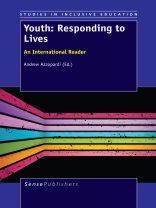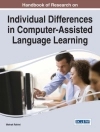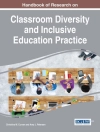This book draws from various fields of knowledge, in an effort to theorise, create new and innovative conceptual platforms and develop further the hybrid idea of discourses around social inclusion and youth (from policy, practice and research perspectives). Youth: Responding to lives – An international handbook attempts to fill the persistent gap in the problematisation and understanding of inclusion, communalism, citizenship – that are intertwined within the complex youth debate. It writhes and wriggles to highlight the interconnections between the encounters, events and endeavors in young people’s lives. The focus of this edited work is also intended to help us understand how young people shape their development, involvement, and visibility as socio-political actors within their communities. It is this speckled experience of youth that remains one of the most electrifying stages in a community’s lifecycle. Contributors to this text have engaged with notions around identity and change, involvement, social behavior, community cohesion, politics and social activism. The chapters offer an array of critical perspectives on social policies and the broad realm of social inclusion/exclusion and how it affects young people. This book essentially analyses equal opportunities and its allied concepts, including inequality, inequity, disadvantage and diversity that have been studied extensively across all disciplines of social sciences and humanities but now need a youth studies ‘application’.
Содержание
Contributors; Introduction; Chapter 1: Re-vitalising the Youth Subculture Concept; Chapter 2: Serv(ic)ing the Country? Critical Reflections on Youth Development and Citizenship Education from India; Chapter 3: Youth Activism: Social Movements in the Making or in the Taking?; Chapter 4: Spatio-Temporal Concepts and the Socio-Physical Realities Impinging on the Rehabilitation of Incarcerated Youth; Chapter 5: Playing Grown-up: Using Critical Disability Perspectives to Rethink Youth; Chapter 6: Schools Promoting Community Involvement for Inclusion: The Impact of Learning for Future Generations; Chapter 7: Inclusion Is …: Musing and Conversations about the Meaning of Inclusion; Chapter 8: Acceptance or Acceptability: Youth Inclusion in Today’s Schools; Chapter 9: Constructing a Modern Disability Identity: Dilemmas of Inclusive Schooling in Zambia; Chapter 10: The Power of Imagination in the Lives of Young People with Significant Disabilities; Chapter 11: The World According to Sofie: Endless Search for Participation; Chapter 12: Warning: Labels May Cause Serious Side Effects; Chapter 13: Youth LEAD: Reflections on a Leadership Program for Youth with Developmental Disabilities; Chapter 14: How Thinking against the Grain Teaches You to Love What School Hates; Chapter 15: How Can I Lose My Shyness …? The Exploration of Self-Knowledge through Peer Mediated Articulations; Chapter 16: Developmental Denial: How the Attitudes of Parents and Professionals Shape Sexuality Education for Youth with Intellectual Disabilities; Chapter 17: Conceptualizing Students with “Significant Intellectual Disabilities”: Uncovering the Discourse in Special Education Textbooks.












